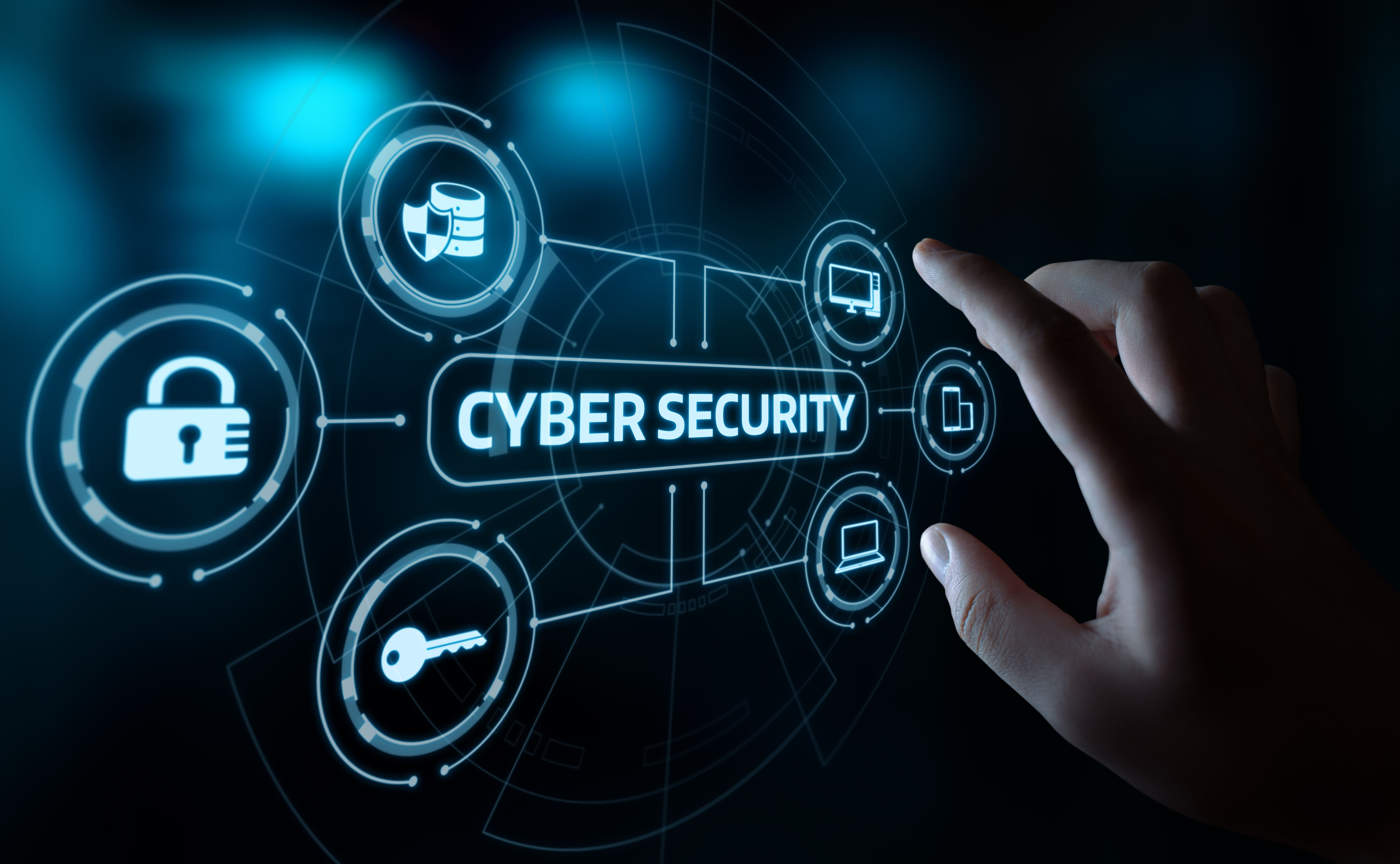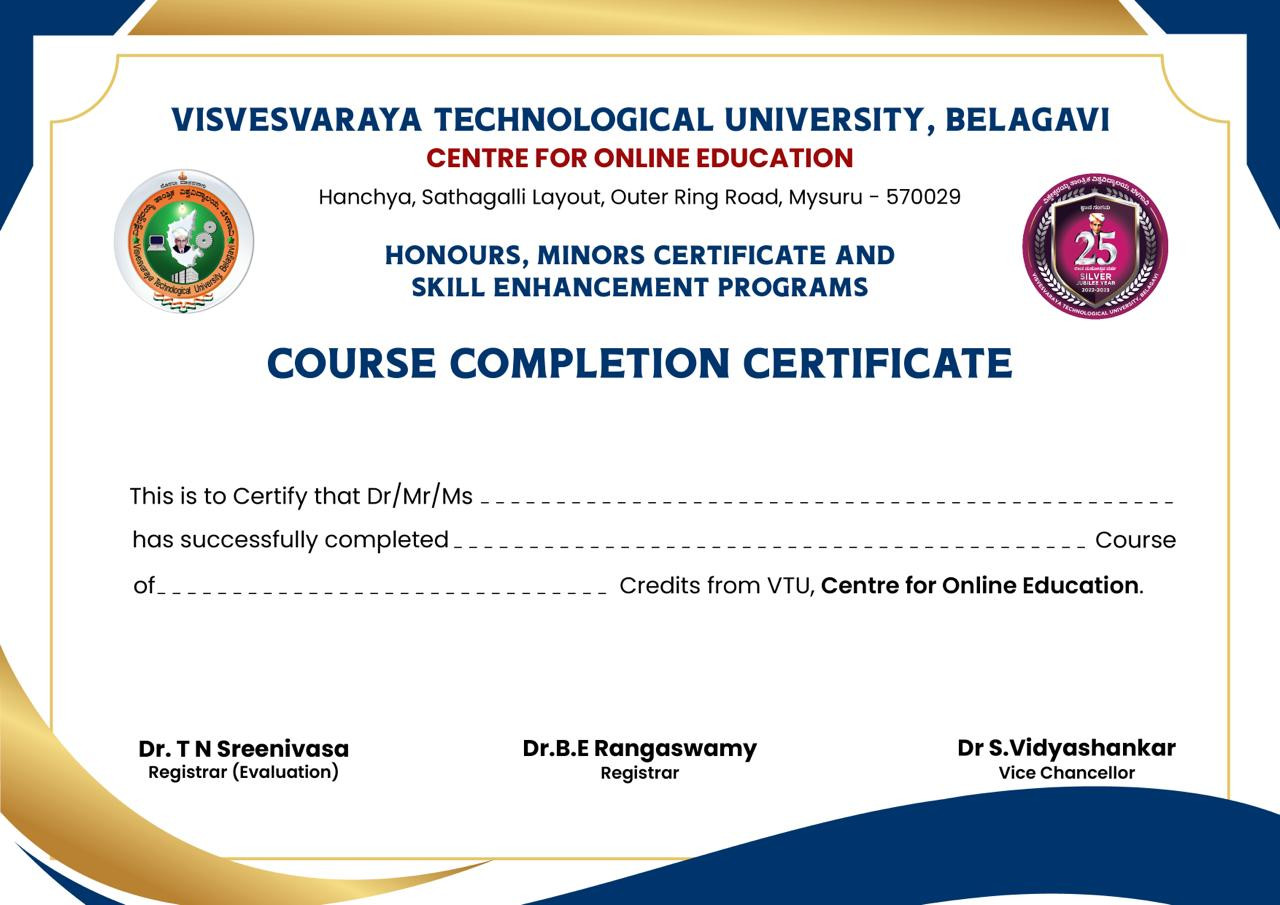Why choose our Cyber Security Program?
Learn to identify computer and network security threats, classify the threats, develop a security model, encrypt and decrypt messages using block ciphers, sign and verify messages using signature generation, verify algorithms, analyse existing authentication and key agreement protocols, and identify their weaknesses, application security, secure Software Dev
Virtual hands-on environment integrated within the course to help learners to try what they have learned practically, Project based industry assignments designed by industry experts to implement learning
Three Periodic Formative Assessments to assess course progress
Remote internship opportunity and Placement assistance for successful candidates
Dedicated online course communities to connect with academic and industry experts
Helpdesk support for quick resolution of queries
Accelerate your Career with an Honours Degree
Online | 24 Months | Expert Lectures
Criteria
B.E/B.Tech. Students in their 5th semester onwards who want to diversify their careers in the industry
Lectures from renowned Subject Matter Experts from leading Academia Industry, Access to self paced lea
Built in hands on environment for practical implemention of the technologies covered, Industry assignm
Enhance your career with Remote Internship Opportunity and Placement Assistance.
What will you learn in this program?
Total Credits earned: 18 credits (across 3 courses and 270 hours of learning)
Key learnings: Basic Security Services, Anatomy of an Attack, Cyptographic tools, Threat modelling, Network security, Database encryption, Identity and access management, Security standards
Remote internships
Learn Information Security - A practitioner’s perspective, Practical Approach to Cyber Security, Advanced Cyber Security - An Application Approach
Project based industry assignments
Visibility to placement opportunities for successful candidates, subject to hiring criteria of corporates.
Curriculum
1.Information Security – A practitioner’s perspective:
Information Security - Practitioner's Perspective is a course in which students will learn and demonstrate their ability to identify computer and network security threats, classify the threats, and develop a security model to prevent, detect, and recover from attacks. They will also learn to encrypt and decrypt messages using block ciphers, sign and verify messages using well known signature generation. Verifying algorithms, analysing of existing authentication and key agreement protocols, and identifying their weaknesses are also a part of the course.
2.Practical Approach to Cyber Security:
Practical Approach to Cyber Security is a course that helps students to empower and enhance their proficiency in cyber security. It provides guidance on cyber security trends, industry best practices, protective measures against cyber threats, and more.
3. Advanced Cyber Security – An Application Approach:
The Advanced Cyber Security - An Application Approach course deals with Cyber Security from an information security management perspective. The course includes application security, secure software development life cycle and emphasises on the need for implementing security in the Software Development Life Cycle (SDLC) phase. The course also covers IT strategy management, business continuity planning, planning defence mechanism against cyber attacks, information security standards, information security policy management, access control management and the objectives of security control.
1.Information Security – A practitioner’s perspective
Module 1: Introduction to Basic Security Services
- Submodule 1: Computer security concepts
- Submodule 2: Confidentiality and integrity
- Submodule 3: Security architecture for open systems
- Submodule 4: Computer security trends
Module 2: Anatomy of an Attack
- Submodule 1: Network mapping using ICMP (internet control message protocol) queries
- Submodule 2: TCP (transmission control protocol) pings
- Submodule 3: TCP (transmission control protocol) and UDP (user datagram protocol) port scanning
- Submodule 4: FTP (file transfer protocol) bounce scanning
- Submodule 5: Vulnerability scanning
- Submodule 6: System and network penetration, denial-of-service - defence and response
Module 3: Protocols Attacks and Defence Mechanisms
- Submodule 1: Network layer
- Submodule 2: Transport layer
- Submodule 3: Application layer
Module 4: Malicious Software
- Submodule 1: Types of malicious software (malware)
- Submodule 2: Propagation - infected content, viruses, vulnerability exploit, worms and propagation social engineering - spam email, Trojans
- Submodule 3: Payload system corruption, attack agent - zombie, bots, information theft - keyloggers, phishing, spyware, stealth - backdoors, rootkits
Module 5: Cryptographic Tools
Module 6: Topics in Security
- Submodule 1: Security auditing - security auditing architecture, security audit trail, implementing
- Submodule 2: Legal and ethical aspects - cyber crime and computer crime, intellectual property, privacy, ethical issues
2) Practical Approach to Cyber Security :
Module 1: Need for Cyber Security and Security Mindset
Module 2: Threat Modeling and Security Architecture
Module 3: Basics of Cryptography
- Submodule 1: Historical overview, asymmetric/symmetric ciphers, hash functions
- Submodule 2: Digital signature, certificate, transport layer security (TLS)
Module 4: Web Security: Web Attacks and Defences
- Submodule 1: How internet and web works: underlying techniques recap
- Submodule 2: SQL injection attacks and mitigation
- Submodule 3: Cross-site scripting (XSS) attacks and defences
- Submodule 4: Cross-site request forgery (CSRF) attacks and defences
- Submodule 5: Web tracking and web privacy
Module 5: Network Security
- Submodule 1: Network threat model
- Submodule 2: Tools of the trade: ping, nmap, traceroute, wireshark, tcpdump
- Submodule 3: Protocol attacks: blind spoofing, SYN flooding
- Submodule 4: DDoS attacks and defences
- Submodule 5: Botnets and crimeware
- Submodule 6: VPN and firewalls
Module 6: Authentication and Access Control
- Submodule 1: Access control models
- Submodule 2: Passwords: attacks and defences
- Submodule 3: OAuth 2.0
- Submodule 4: Multi-factor authentication
- Submodule 5: Biometrics
Module 7: Database Encryption
- Submodule 1: Encrypted file systems
- Submodule 2: Application-level encryption
Module 8: Usable Security: Design Principles
- Submodule 1: Behavioural nudging for users
- Submodule 2: Security notifications
Module 9: Security in Practice
- Submodule 1: Security auditing
- Submodule 2: Compliance course syllabus
3) Advanced Cyber Security – An Application Approach:
Module 1: Application Security
- Submodule 1: Importance of application security
- Submodule 2: Open Web Application Security Project (OWASP) top 10 web application vulnerabilities
- Submodule 3: Secure Software Development Life Cycle (SSDLC)
Module 2: Data and Endpoint Security
- Submodule 1: Data security, data security controls
- Submodule 2: Endpoint security, host/endpoint security
Module 3: Identity and Access Management (IAM)
- Submodule 1: Authorization, authentication
- Submodule 2: Access control, access control models
- Submodule 3: Privilege levels, IAM lifecycle, identity and access management process and activities
Module 4: Phases of a Cyber Attack
- Submodule 1: Reconnaissance: adversary identifies and selects a target
- Submodule 2: Weaponize: adversary packages an exploit into a payload designed to execute on the targeted computer/network
- Submodule 3: Deliver: adversary delivers the payload to the target system
- Submodule 4: Exploit: adversary code is executed on the target system
- Submodule 5: Install: adversary installs remote access software that provides a persistent presence within the target environment system
- Submodule 6: Command and control: adversary employs remote access mechanisms to establish a command and control channel with the compromised device
- Submodule 7: Act on objectives: adversary pursues intended objectives such as data exfiltration, lateral movement to other targets
Module 5: Security Processes in Practice for Businesses
- Submodule 1: Key security business processes
- Submodule 2: Corporate security governance
- Submodule 3: IT strategy management
- Submodule 4: Portfolio, program, project management
- Submodule 5: Change management
- Submodule 6: Supplier (third-party management)
- Submodule 7: Problem management
- Submodule 8: Knowledge management
- Submodule 9: Information security management
- Submodule 10: Business Continuity Planning (BCP)
- Submodule 11: IT operations management
- Submodule 12: Overview of top 20 security controls
Module 6: Information Security Standards
- Submodule 1: Information security standards - need
- Submodule 2: ISO/IEC 27000 standard series
- Submodule 3: ISO/IEC 27001
- Submodule 4: ISO/IEC 27002
- Submodule 5: ISO/IEC 27005
- Submodule 6: ISO/IEC 27006
- Submodule 7: SP 800 standard series
- Submodule 8: SP 800 -12
- Submodule 9: Standard of Good Practice (SoGP)
- Submodule 10: Control Objectives for Information and Related Technology (COBIT)
- Submodule 11: BSI IT-Grundschutz baseline protection
- Submodule 12: BSI Standard 100-1
- Submodule 13: BSI Standard 100-2
- Submodule 14: BSI Standard 100-3
Honours Degree In Cyber Security
|
||
Total Program Fee
INR 40,002 |

|
|
Application Process
Register to Honour/Minor degree by filling online application and by paying registration fee.
Get your online application approved.
Start enrolling to Honour/Minor degree program.
Admissons are closed once the requisite number of participants enroll for the upcoming cohort. Apply early to secure your seat.
Deadline:10-Apr-2024
Frequently Asked Questions
What is an Honour degree?
The Honours degree programme is designed to let the graduate engineering students to earn experiences to enhance themselves as professional engineers in the competitive world. Through this pr
How will this programme help students in building their proficiency?
This programme is envisaged to help build a strong foundation across various streams through digital lectures, formative and summative assessments, mini projects, mentorship from renowned ind
How is this programme different from other industry programmes?
This programme is designed to continuously make academic content more relevant to students by integrating industry inputs, which is a compelling need of the industry.
Will there be any internship and job opportunity provided through this programme?
Remote Internship opportunities will be offered to students who have completed their industry assignments, subject to vacancies and the corporate hiring policy. Successful students who have c
Contact
Still have queries?
Contact Us
Please fill in the form and a Program Advisor will reach out to you. You can also reach out to us at onlineprograms@vtu.ac.in or 9480223900

